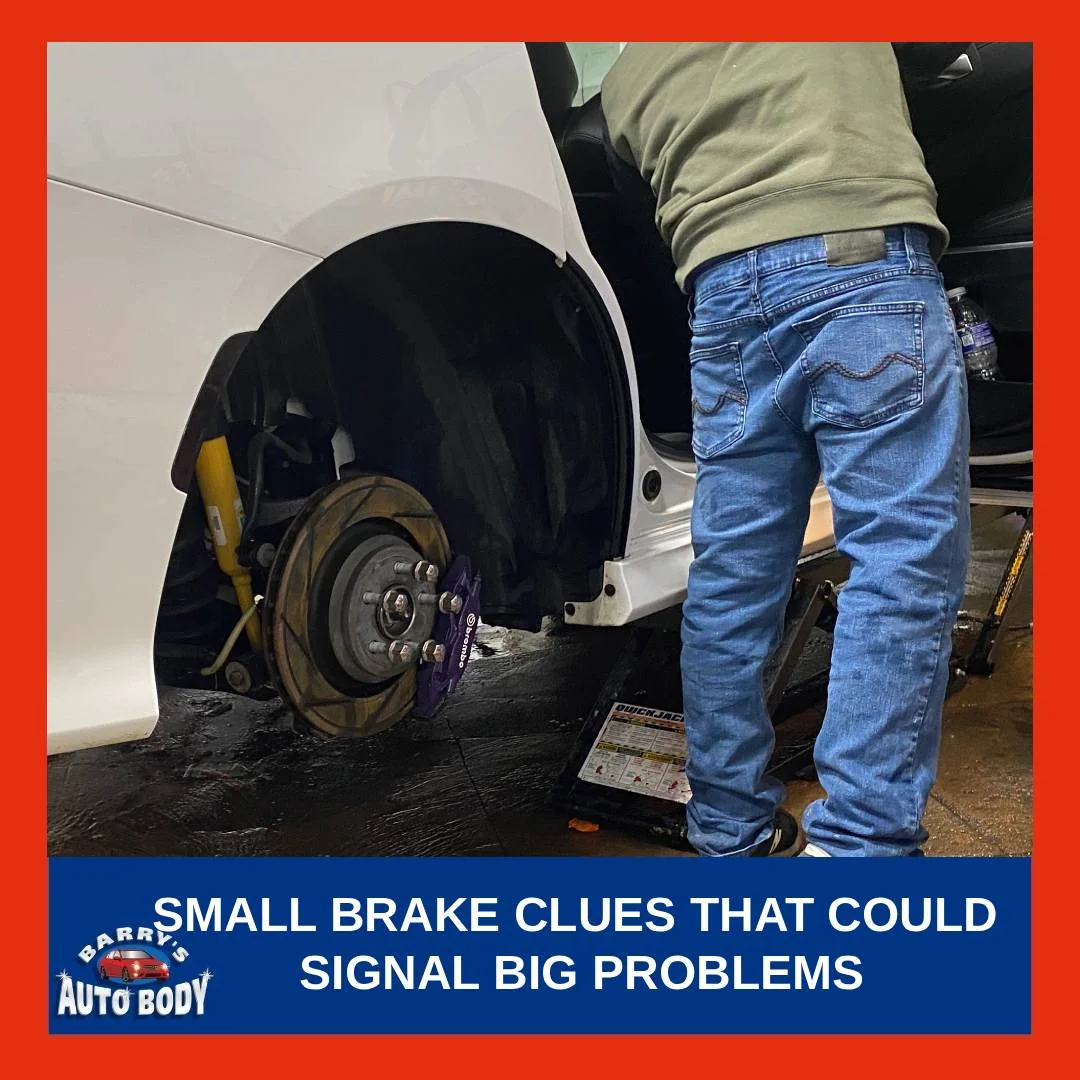You’re driving along, music playing, traffic moving smoothly, and everything feels fine. Then, you press the brake pedal and notice a change. It’s subtle—maybe a faint noise, a slight pull, or a softer pedal than usual. Many drivers might dismiss these small changes, but they can be early indicators of brake issues.
Your brakes are one of your car’s most critical safety systems, and paying attention to even minor changes can help keep you safe while avoiding costly repairs later on.
Let’s break down the subtle brake warning signs, why they matter, and how you can address them before they become major problems.
Why Brake Health Matters
Brakes are your car’s first line of defence against accidents. They work through a combination of mechanical and hydraulic systems designed to slow and stop your vehicle efficiently. Even minor issues can compromise this process, increasing stopping distances or making the car harder to control in an emergency.
Neglecting brake maintenance can lead to:
- Reduced stopping power.
- Uneven wear on tires and suspension components.
- Complete brake system failure in severe cases.
Because brakes rely on multiple parts—pads, rotors, callipers, brake fluid, and more—any problem in one area can affect the entire system.
Minor Warning Signs Your Brakes Might Be in Trouble
Squealing or Grinding Noises
A high-pitched squeal when braking can indicate that your brake pads are wearing thin. Many pads have built-in wear indicators that create this sound as a reminder to replace them.
Grinding noises might mean the pads have worn down completely, allowing metal components to contact the rotors. This can lead to rotor damage and significantly reduced braking efficiency.
Actionable Steps:
- Inspect your brake pads visually through the wheel spokes if possible.
- If the noise persists, schedule a brake inspection to determine whether pad replacement or rotor resurfacing might be needed.
Soft or Spongy Brake Pedal
A brake pedal that feels softer than usual, or sinks closer to the floor before engaging, can point to issues like air in the brake lines, worn seals, or a leak in the brake system.
This can reduce braking responsiveness and might be a sign that the brake hydraulic system needs attention.
Actionable Steps:
- Check brake fluid levels in the reservoir. If low, it could indicate a leak.
- Avoid driving at high speeds until the issue is professionally inspected.
- Bleeding the brake lines can sometimes restore firmness, but a technician should do it.
Vibrations When Braking
If you feel a pulsing sensation in the brake pedal when slowing down, it might be due to warped rotors. This can happen from overheating during heavy braking or uneven pad wear.
Actionable Steps:
- Test at moderate speeds in a safe area to confirm if vibration occurs only during braking.
- Warped rotors might be resurfaced if damage is minor, or replaced if severe.
Pulling to One Side When Braking
When your car veers left or right during braking, it can indicate uneven brake pad wear, caliper issues, or brake fluid contamination.
Actionable Steps:
- Check tire pressure to rule out uneven inflation as a cause.
- If the pull happens consistently, a brake inspection can identify if calipers need servicing or pads replaced.
Brake Warning Light On
Your dashboard’s brake warning light can activate for several reasons, including low brake fluid, worn pads, or issues with the ABS.
Actionable Steps:
- Check your vehicle’s manual to understand what the warning light means.
- Even if the brakes feel normal, schedule a diagnostic check—warning lights often indicate hidden issues.
Additional Subtle Indicators to Watch For
- Unusual Smells: A burning or chemical odour after heavy braking can indicate overheated pads or fluid.
- Longer Stopping Distances: If it takes more effort or time to stop, it can mean pads, rotors, or fluid need attention.
- Brake Pedal Position Changes: If your brake pedal gradually gets closer to the floor over weeks, it might suggest a slow hydraulic leak.
Immediate Actions if You Notice Warning Signs
If you notice any of the above symptoms:
- Reduce your speed and avoid sudden stops until the issue is checked.
- Check your brake fluid if you can do so safely.
- Keep a record of when the issue started and any patterns—it can help a mechanic diagnose the problem.
- Schedule a brake inspection promptly.
The Role of Professional Brake Inspections
While you can perform basic checks yourself, only a professional brake inspection can uncover deeper issues.
Benefits include:
- Access to precision measuring tools for pad thickness and rotor wear.
- Ability to spot problems before they become safety hazards.
- Proper bleeding and fluid replacement to maintain brake performance.
How Barry’s Auto Body Can Help
Barry’s Auto Body offers comprehensive brake services, including:
- Detailed brake system inspections.
- Pad, rotor, and caliper replacement.
- Brake fluid flushes and line repairs.
- Transparent pricing and customer-focused service.
By addressing issues early, you can help maintain safe braking performance and avoid higher costs later.
Small brake issues can be easy to overlook, but they might be early warnings of serious problems. By knowing what to watch for—squeals, vibrations, soft pedals, or warning lights—you can take steps to keep your vehicle safe and roadworthy.
If you’ve noticed any of these symptoms, consider scheduling a professional brake inspection soon. Your safety, and that of everyone on the road, might depend on it.

